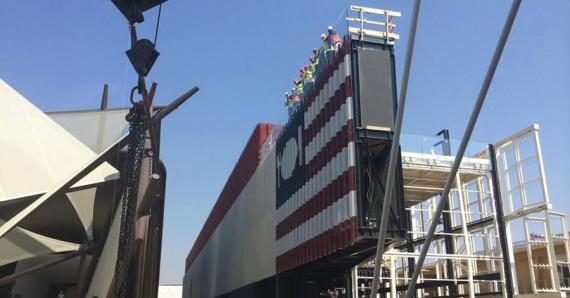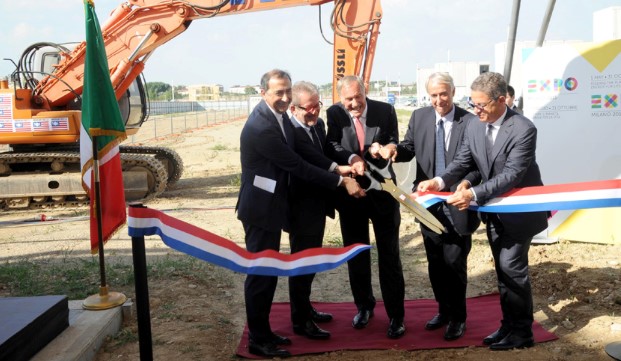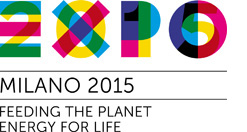How could the United States improve its participation in World’s Fairs?
Editorial by James Ogul, author of Tales from the Expo: Lessons for World’s Fair Exhibitors
[dropcap color=”#888″ type=”square”]R[/dropcap]ecent financial issues with U.S. Participation at Milan Expo 2015 left contractors $26 million in debt due to budget creep and fundraising difficulties (described in detail by Sarah Wheaton in a Feb 24, 2016 article for Politico.com).
Photo at top: Groundbreaking for the USA Pavilion at Milan Expo 2015
Funding: Discouraging words
Many cite restrictive budgetary language from Congress in 1994 and later in 1999 as cutting off federal funding for these endeavors. That is not true.
The actual wording of the Congressional language states: “Except as provided in subsection (b) of this section and notwithstanding any other provision of law, the Department of State may not obligate or expend any funds appropriated to the Department of State for a United States pavilion or other major exhibit at any international exposition or world’s fair registered by the Bureau of International Expositions in excess of amounts expressly authorized and appropriated for such purpose.”
This language does not rule out federal funding. It merely states that you have to request funding in order to get it. But for some reason, the State Department has not requested any funding for expos since this language was put into effect and has relied entirely on private sector fundraising which has proven risky for every expo.
 Not only is it difficult to raise the large amounts needed, but cash flow can be a killer. Work that must be done early on comes at a time when fundraising is just ramping up. In many cases contractors have been asked to work on the promise of later being paid as apparently was the case at Milan. In other cases, contractors have taken the justifiable approach of just stopping work until they could be paid. These work stoppages on complicated and intertwined tasks have sometimes had a crippling effect on getting the project done on time and within budget. In the days when Federal funding was the sole source, the money was all there upfront, eliminating these issues.
Not only is it difficult to raise the large amounts needed, but cash flow can be a killer. Work that must be done early on comes at a time when fundraising is just ramping up. In many cases contractors have been asked to work on the promise of later being paid as apparently was the case at Milan. In other cases, contractors have taken the justifiable approach of just stopping work until they could be paid. These work stoppages on complicated and intertwined tasks have sometimes had a crippling effect on getting the project done on time and within budget. In the days when Federal funding was the sole source, the money was all there upfront, eliminating these issues.
And so I feel strongly that if the U.S. is to avoid continuous embarrassment, it needs to revert to Federal funding – with corporate sponsorship for perhaps special events or even product placement, but not rely on sponsorship to fund bricks-and-mortar or operations.
Create a permanent office
Another issue is the lack of experienced staff at the State Department. These are complex projects and are best handled by people who have been through the process, can anticipate problems before they happen and effectively deal with them from past experience.

A major step forward would be to create a permanent office to oversee these projects. In the past there was a World’s Fair Office in the United States Information Agency, which was folded into State, but that office was abolished in the early 1990s. While it existed, a core group of three or four people with hands-on world’s fair experience developed oversight expertise and kept records for each expo. This enabled them to apply lessons learned to future expos. Everything from long range planning on future expos, complete with expected budgets to how to prepare an RFP for a pavilion, to how to go about the process of appointing a Commissioner General, to knowing which corporations have been enthusiastic past supporters, to managing an ongoing expo project could be handed by this office.
Establishing a permanent office would be an enormous help to these projects. Since the large-scale (Registered) world’s fairs happen every five years and the smaller ones (Recognized) happen between the larger ones, there would be ample work to keep the small, dedicated unit busy.
Future expos, future opportunities
With Astana Expo 2017 and Dubai Expo 2020 coming up, let’s hope that this recent U.S. embarrassment at Milan can be a catalyst to restructure the State Department role in U.S. Participation in World’s Fairs. Other countries are taking full advantage of World’s Fairs with their multi-million audiences as a venue for international diplomacy and so should we.

Since retiring from the US State Department in 2011 after a 30+ year career in world expos, James Ogul has remained on the scene in an advisory and consulting role. He writes regularly for InPark Magazine about world’s fairs.
Click for more world expo coverage from InPark
Sarah Wheaton’s article in Politico, referenced above, can be seen at this link.







